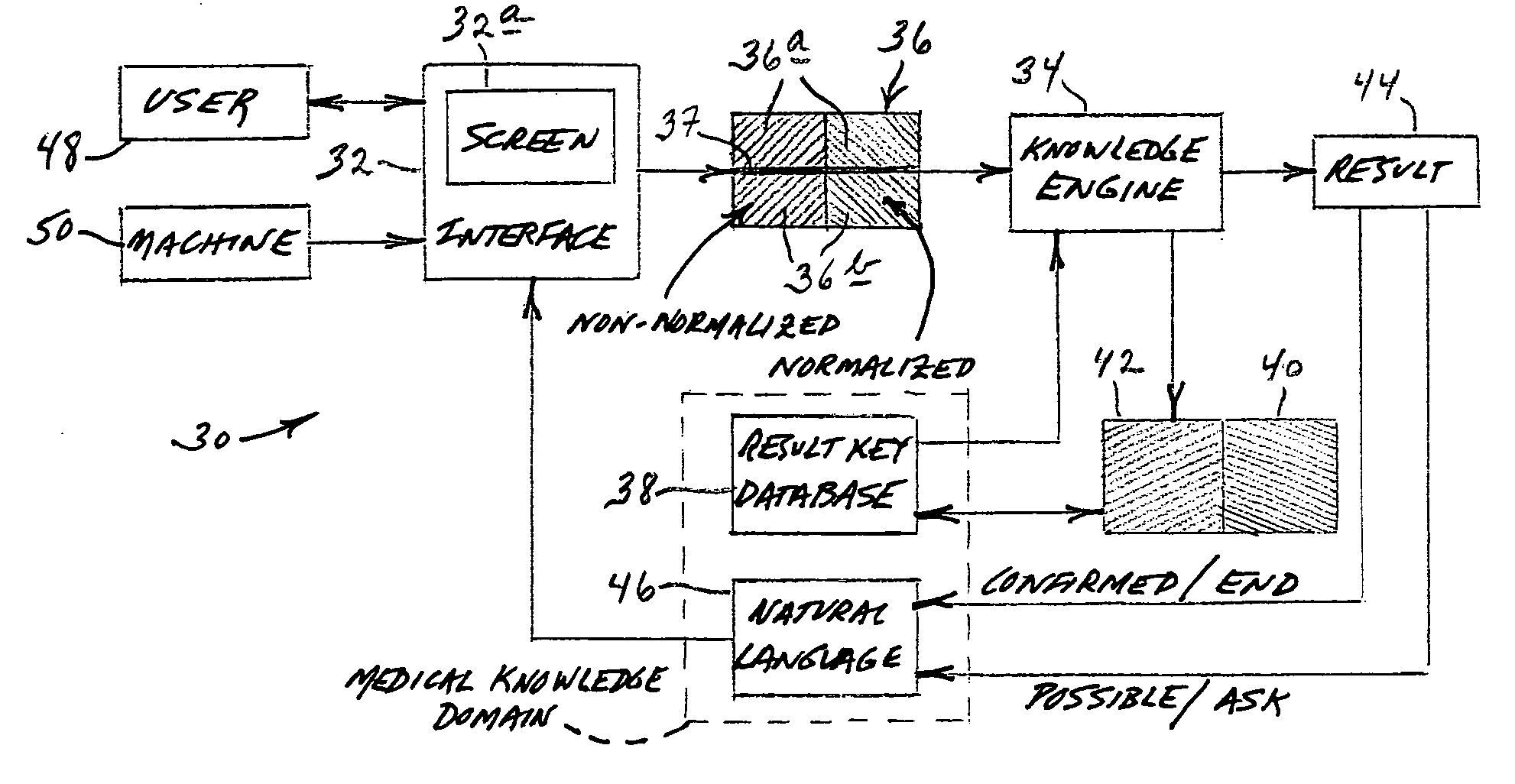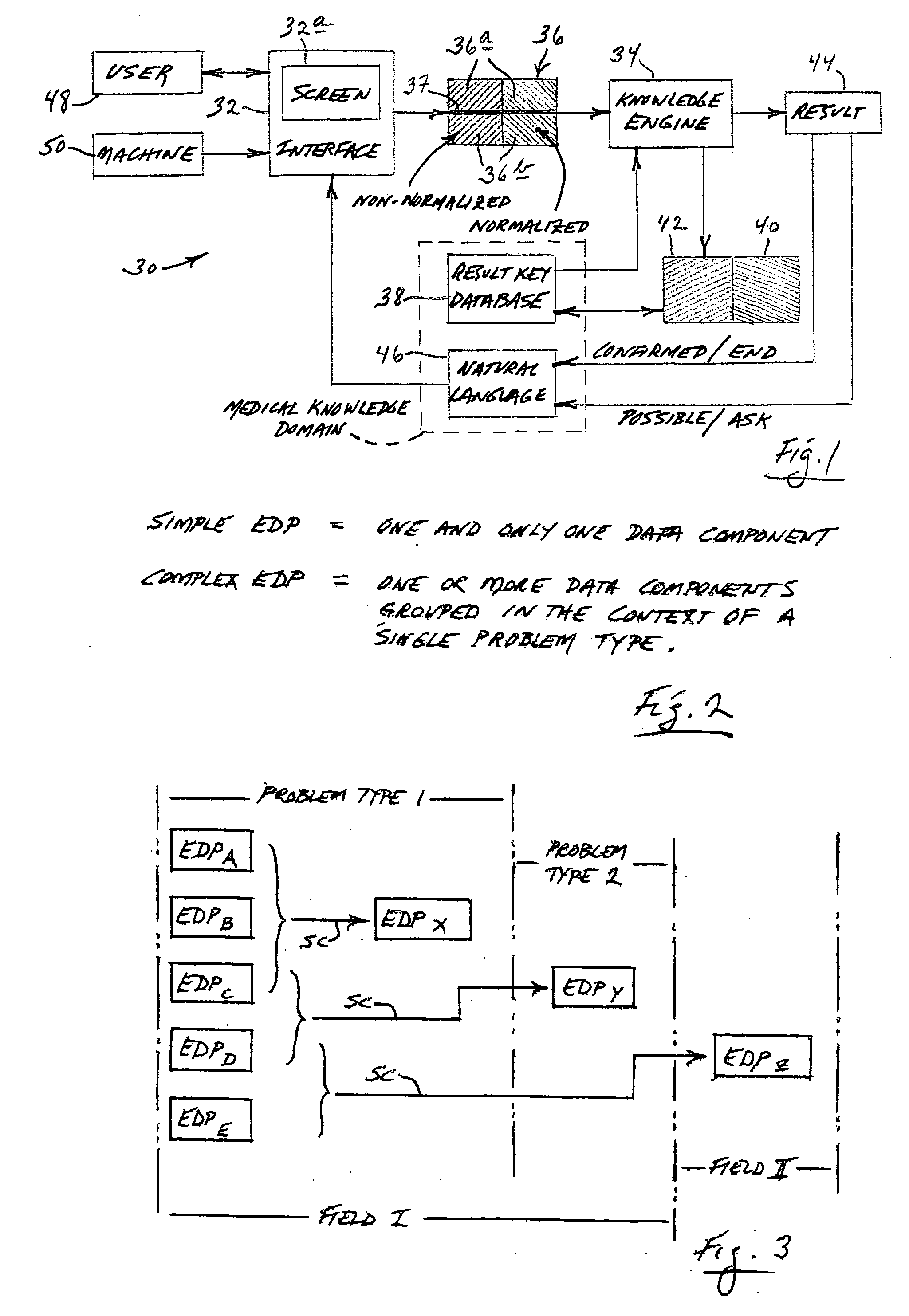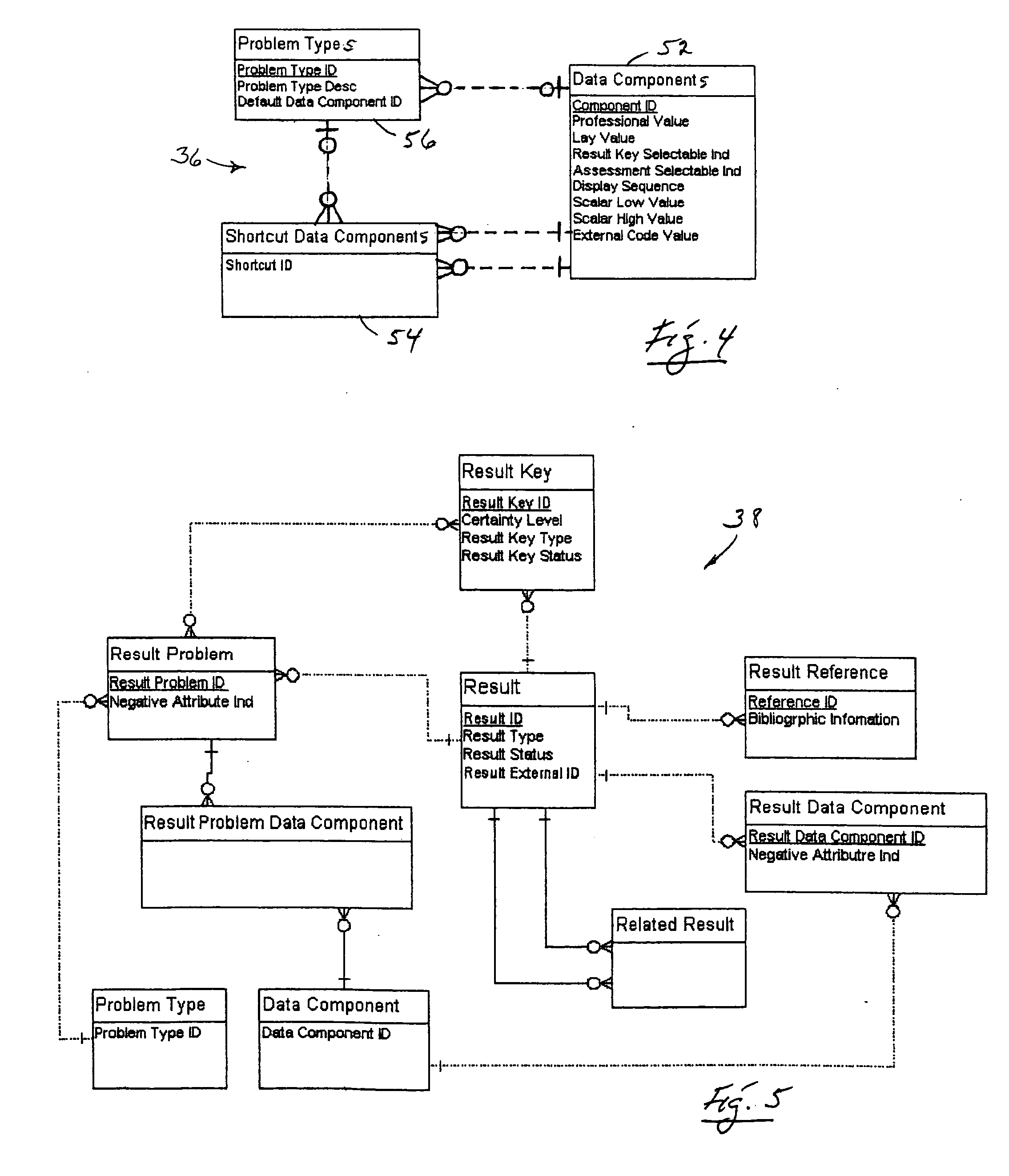Medical diagnosis including graphical user input
a graphical user input and medical diagnosis technology, applied in the field of medical diagnosis and assessment methods, apparatuses, systems, etc., can solve the problems of significant overhaul of systems, limited diagnosis and assessment behavior, and general limitations of conventional artificial intelligence machines and methods, so as to enhance the performance of structure and methodology, and improve the effect of diagnosis and assessment processing efficiency
- Summary
- Abstract
- Description
- Claims
- Application Information
AI Technical Summary
Benefits of technology
Problems solved by technology
Method used
Image
Examples
Embodiment Construction
[0043] As is generally set forth above, FIGS. 1-10, inclusive, in the drawings describe underpinning fundamentals of the present invention, both in a text-based sense, and in a graphics-based sense
[0044] Indicated generally at 30 is a computer-based medical knowledge system (and methodology) which is (are) constructed and organized in accordance with the present invention to perform diagnoses and assessments (diagnosis / assessment process) regarding medical problems and / or situations. Much of the invention description which now follows will be presented from a systemic rather than a methodological point of view, and initially, for the most part, from a text-based point of view. These systemic and text-based points of view will be understood to function as a fully enabling disclosure and description of the related, implemented methodology of the invention, as well as of the graphics-based aspects of the invention.
[0045] Included in system 30 are a user-interactive, screen-display co...
PUM
 Login to View More
Login to View More Abstract
Description
Claims
Application Information
 Login to View More
Login to View More - R&D
- Intellectual Property
- Life Sciences
- Materials
- Tech Scout
- Unparalleled Data Quality
- Higher Quality Content
- 60% Fewer Hallucinations
Browse by: Latest US Patents, China's latest patents, Technical Efficacy Thesaurus, Application Domain, Technology Topic, Popular Technical Reports.
© 2025 PatSnap. All rights reserved.Legal|Privacy policy|Modern Slavery Act Transparency Statement|Sitemap|About US| Contact US: help@patsnap.com



